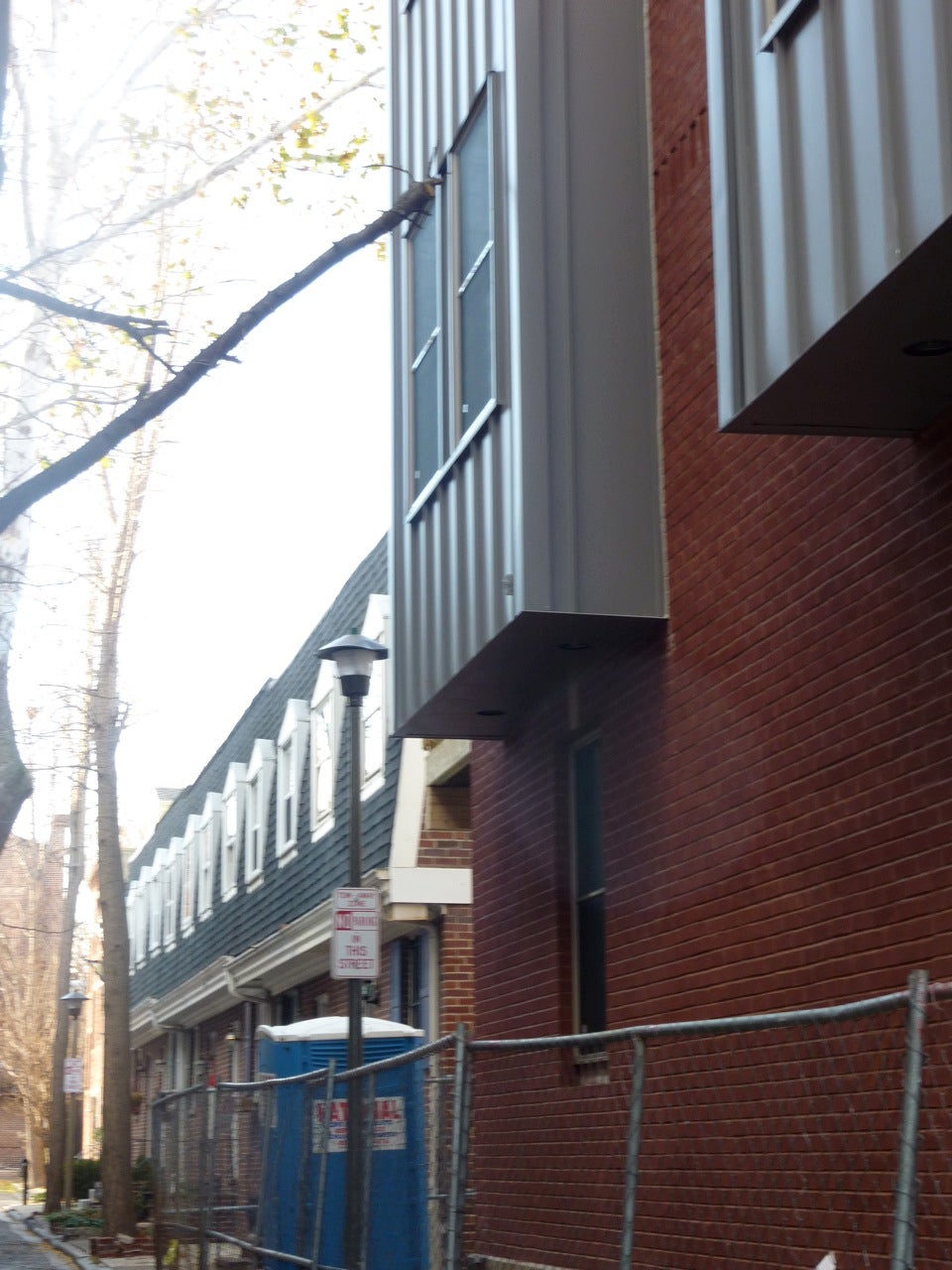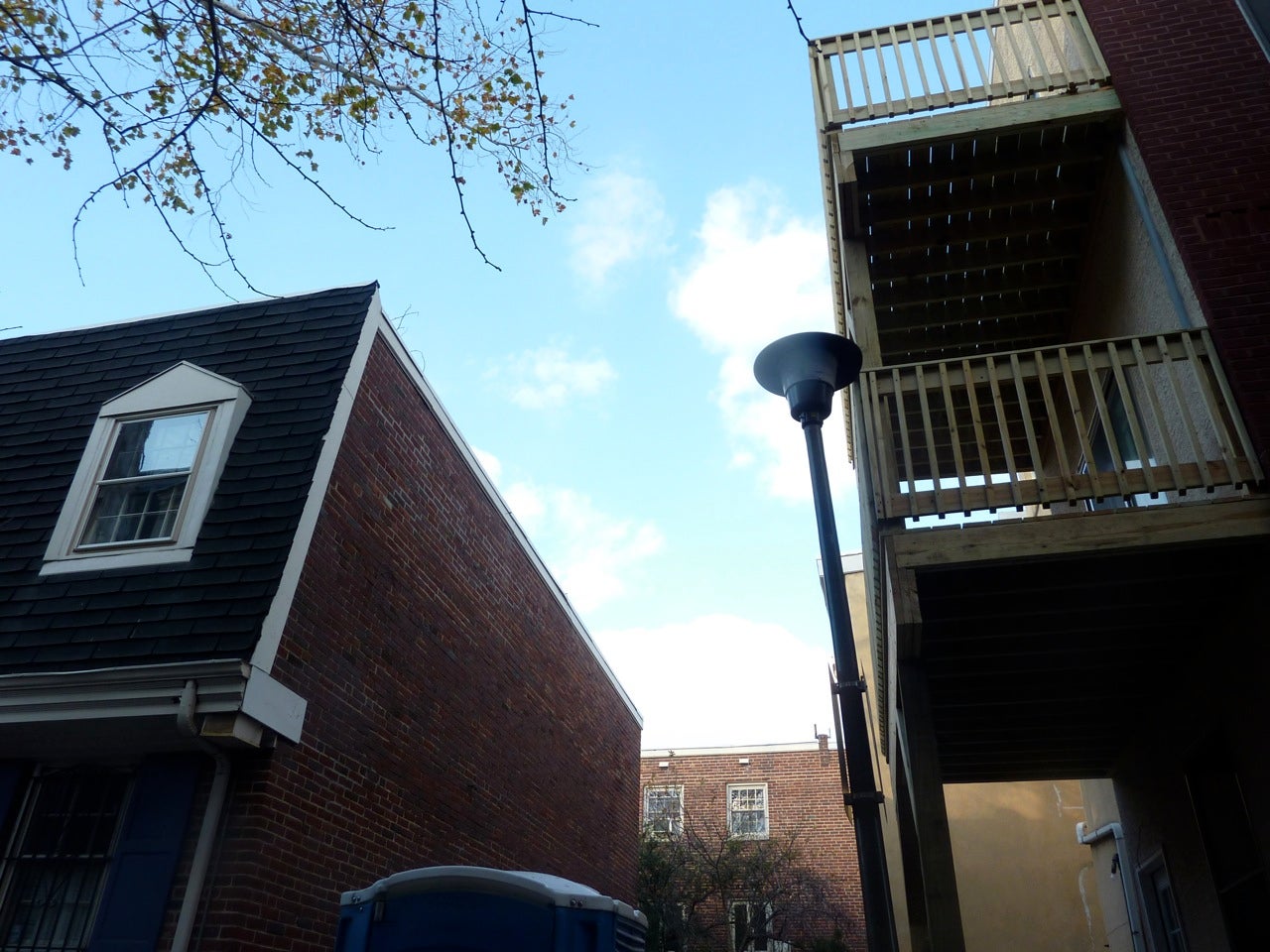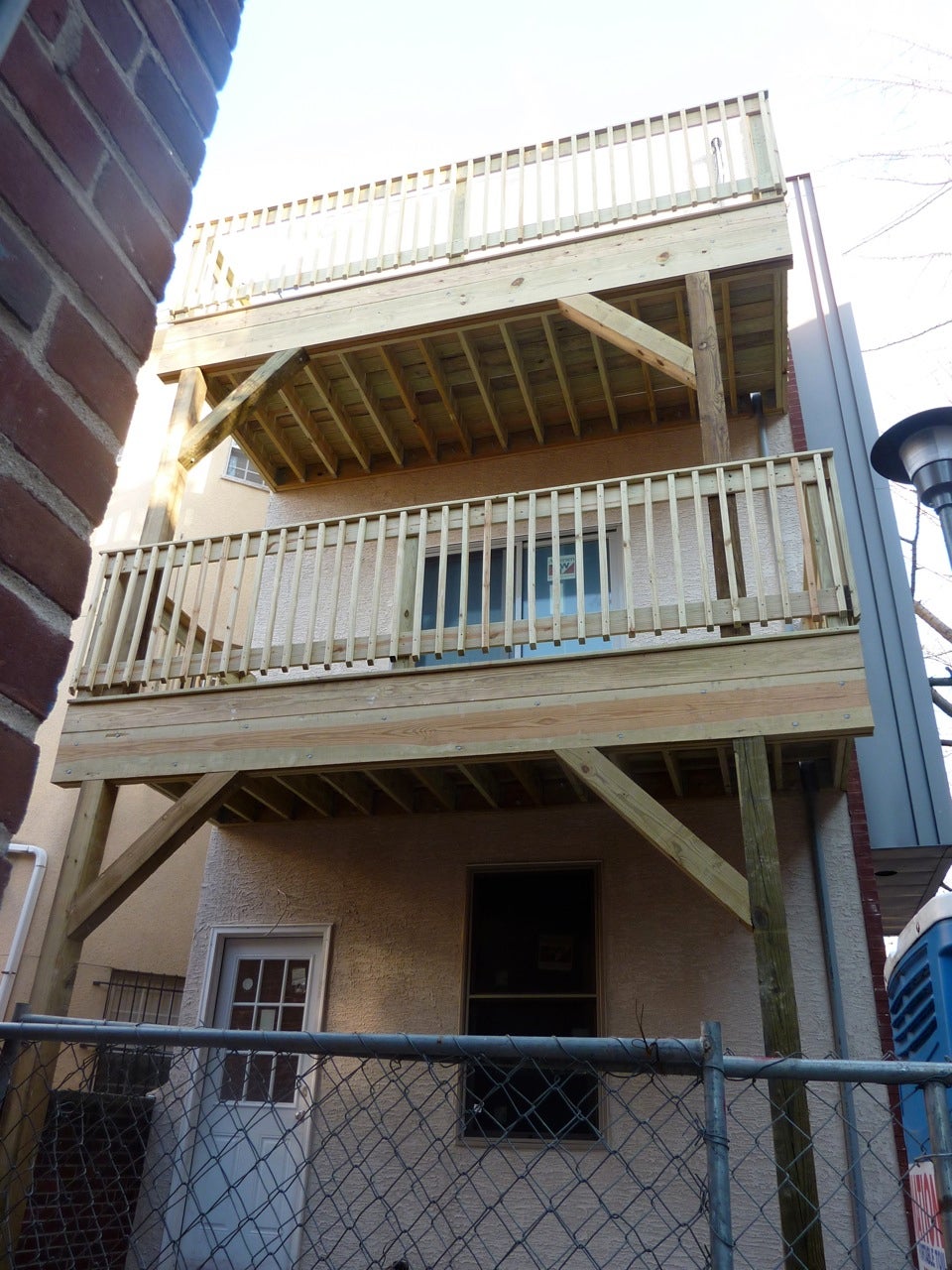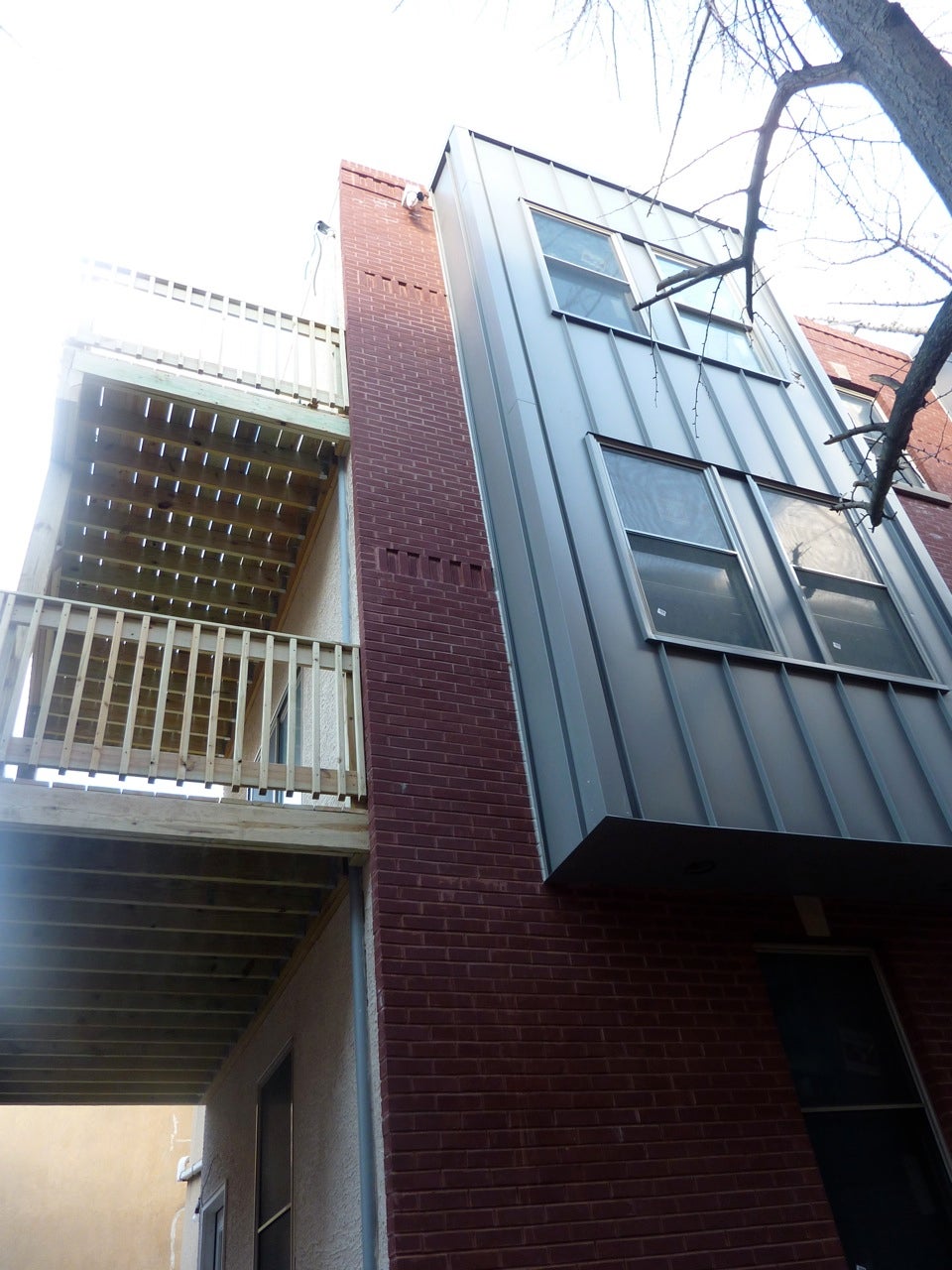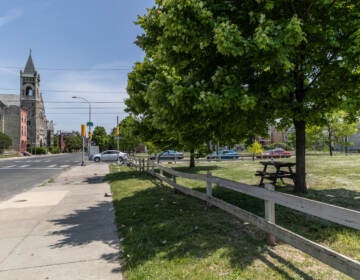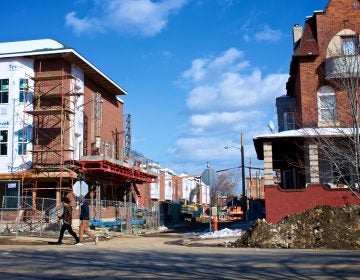Follow-up to Bradford Alley construction fight
Sue Ann Prince has proclaimed herself “anonymous no more,” and to prove it, she stood before the Zoning Board of Adjustment yesterday to appeal a recent permit issued by the Department of Licenses and Inspections.
Her unusual case, first covered in PlanPhilly [http://planphilly.com/case-point-about-contextual-zoning], concerns an ongoing fight against the erection of what neighbors call an out-of-scale duplex rising at the corner of her block, tiny Bradford Alley in Washington Square West. As neighbors have discovered, the project is indeed in complete compliance with zoning and streets codes.
But this time, Prince, accompanied by two attorneys, a coterie of neighbors, and aides from Councilmen Frank DiCicco’s and Jim Kenney’s offices, appeared at the ZBA hearing to specifically question whether an over-the-counter deck permit was issued erroneously. “These two, huge [stacked] decks loom over me whenever I walk out my front door,” Prince told the board.
As two representatives from the city’s Licenses and Inspections Department listened, she added that she had sought legal council only after finding it difficult “as a private citizen” to get clear answers from the city about compliance issues. Upon questioning by the board, Prince detailed the attempts by neighbors to deal with L&I, as well as the property’s owner, Jerry Hamilton, and the project’s builder, New Era Construction. Hamilton was present at the hearing, as was a representative from New Era, and a defending attorney.
Although Nick Shmanek of DiCicco’s office raised another bone of contention — the building’s oversized bay windows — and others brought up issues related to work site conditions, the group was encouraged to stick to the point: the decks. The board, the appellants and the defendants soon got bogged down in the details of what exactly counted as “open space” and what the word “roof” meant.
“We need to look at these decks as a knocking-down of required rear yard space,” contended the appellant’s zoning attorney (and Zoning Code Commission member) Richard DeMarco. “We believe L&I issued the permit based upon false information. They are not only an eyesore, but illegal, according to the [zoning] code.”
L&I’s Patrick Naughton, who initially examined the plans, declared that the permit “was not issued in error.” He went on to explain that the zoning code defines a “deck” as an open structure without roof, walls or stairs.
DeMarco challenged the L&I team: “So, you are not viewing the deck as being roofed over, is that correct?” “That is correct,” replied Naughton.
After prodding from DeMarco, L&I’s Jeanne Klinger (a ZCC alternate for ex-officio Fran Burns, L&I chief) added: “If the decks had roofs, then the rear yard space would have to be greater.”
Lynette Brown-Sow, chair of the ZBA (and also ex-officio on the ZCC), then asked Naughton for his take on the “function” of a roof. “The function of a roof is to keep the surface below out of the weather,” he replied. “A deck doesn’t function as a roof.”
DeMarco countered: “A definition of ‘open space’ is that you can see the sky, right?”
“Not within the zoning code,” Naughton corrected. “A deck is always considered an open structure.”
The two men then presented different photos to the board, one that apparently showed sun passing through the decks, and one that didn’t. Board member Samuel Staten, Jr. lost patience at this point, declaring that after 30-plus years in the construction business he, at least, knew the difference between a roof and a deck. And to him, the structures under consideration were clearly decks. “The bottom of these decks — water can pass through them,” he said. (He is correct. A walk-by the building clearly demonstrates that although the decks blot out the sky, they are constructed of slatted wood.)
Another neighbor, Judge Anna Rizzo, spoke up. “But zoning is all about context,” she told the panel, “and the oddity of how this property is shaped with regard to a historic structure is just. . . .” She trailed off, then resumed. “I live by the law. But, I beseech this board to look at this in a different way. I’m asking [you] to look at this in context.”
“We have to follow the law,” said Staten, hitting the nail on the head. With no real interpretative abilities given to the board, the tide was turning. Still, DeMarco tried once again. He urged ZBA members to inspect the site personally. “The code says no deck may be enclosed by a roof,” he reiterated.
The ZBA panel briefly conferred. Someone spoke, then someone else, then a third. Appeal denied. Appeal denied. Appeal denied. A fourth and last voice, that of Peter Gonzales, chimed in, voting to sustain the appeal. But a decision had been made, and the group filed out quietly.
Outside of the hearing room, Rizzo was livid. “I’m outraged,” she flared. “This is not over. It is not over. This is just not logical.”
DeMarco tried to calm her, then added to no one in particular, “this is something that has to be addressed in the new code.” Wearing his ZCC hat, he emphasized, “We’ve really got to look at this.”
As for Prince, she says the next option is the Court of Common Pleas, but she isn’t sure how and when she’ll proceed. “I was a little shocked by the way the case was handled,” she said afterwards. “Clearly the city wants development at whatever cost to the fabric of the neighborhoods.”
Contact the reporter at jgreco@planphilly.com
WHYY is your source for fact-based, in-depth journalism and information. As a nonprofit organization, we rely on financial support from readers like you. Please give today.



